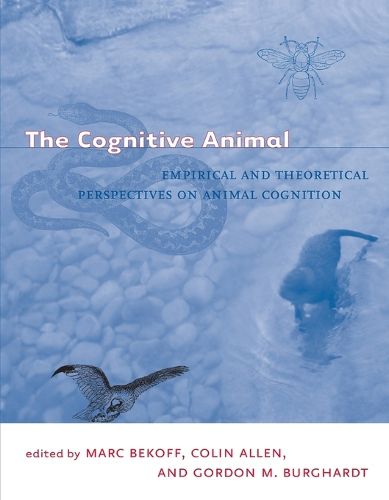Readings Newsletter
Become a Readings Member to make your shopping experience even easier.
Sign in or sign up for free!
You’re not far away from qualifying for FREE standard shipping within Australia
You’ve qualified for FREE standard shipping within Australia
The cart is loading…






The 57 original essays in this volume provide a comprehensive overview of the interdisciplinary field of animal cognition. The contributors include cognitive ethologists, behavioral ecologists, experimental and developmental psychologists, behaviorists, philosophers, neuroscientists, computer scientists and modelers, field biologists, and others. The diversity of approaches is both philosophical and methodological, with contributors demonstrating various degrees of acceptance or disdain for such terms as consciousness and varying degrees of concern for laboratory experimentation versus naturalistic research. In addition to primates, particularly the nonhuman great apes, the animals discussed include antelopes, bees, dogs, dolphins, earthworms, fish, hyenas, parrots, prairie dogs, rats, ravens, sea lions, snakes, spiders, and squirrels. The topics include (but are not limited to) definitions of cognition, the role of anecdotes in the study of animal cognition, anthropomorphism, attention, perception, learning, memory, thinking, consciousness, intentionality, communication, planning, play, aggression, dominance, predation, recognition, assessment of self and others, social knowledge, empathy, conflict resolution, reproduction, parent-young interactions and caregiving, ecology, evolution, kin selection, and neuroethology.
$9.00 standard shipping within Australia
FREE standard shipping within Australia for orders over $100.00
Express & International shipping calculated at checkout
The 57 original essays in this volume provide a comprehensive overview of the interdisciplinary field of animal cognition. The contributors include cognitive ethologists, behavioral ecologists, experimental and developmental psychologists, behaviorists, philosophers, neuroscientists, computer scientists and modelers, field biologists, and others. The diversity of approaches is both philosophical and methodological, with contributors demonstrating various degrees of acceptance or disdain for such terms as consciousness and varying degrees of concern for laboratory experimentation versus naturalistic research. In addition to primates, particularly the nonhuman great apes, the animals discussed include antelopes, bees, dogs, dolphins, earthworms, fish, hyenas, parrots, prairie dogs, rats, ravens, sea lions, snakes, spiders, and squirrels. The topics include (but are not limited to) definitions of cognition, the role of anecdotes in the study of animal cognition, anthropomorphism, attention, perception, learning, memory, thinking, consciousness, intentionality, communication, planning, play, aggression, dominance, predation, recognition, assessment of self and others, social knowledge, empathy, conflict resolution, reproduction, parent-young interactions and caregiving, ecology, evolution, kin selection, and neuroethology.